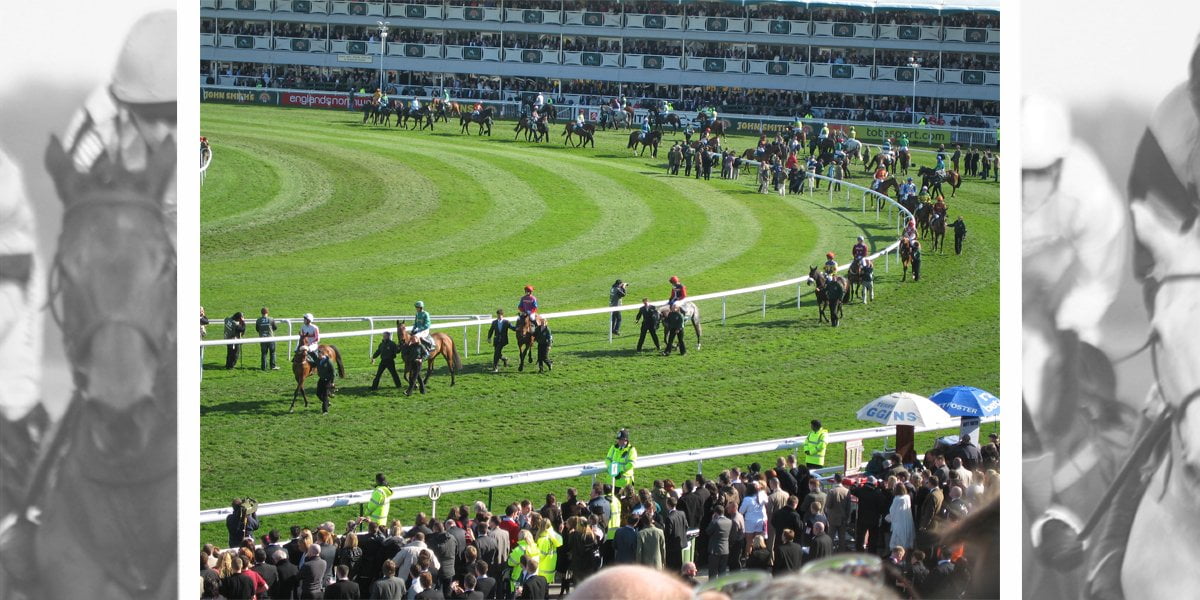Go Racing at Aintree Racecourse
Horses have raced at Aintree, Home of the Grand National, since 1829 – although in those early days it started with Flat racing. Hurdle races were introduced in 1835 and in 1839, Lottery won the first Grand Liverpool Steeplechase, the race that would become known as the Grand National. We’ve got everything you need to Go Racing at Aintree, and we can even show you What to Wear to the Grand National.
Aintree Races Course Information
National Hunt
Horses have raced at Aintree since 1829 although in those early days it started with Flat racing. Hurdle races were introduced in 1835 and in 1839, Lottery won the first Grand Liverpool Steeplechase, the race that would become known as the Grand National.
The Grand National
Aintree is the Home of the Grand National. And that inaugural ‘National’ drew a crowd of around 50,000. The current Hurdles course also dates back to that year, making it the oldest of Aintree’s three existing courses. Over the next 50 years, the ‘National’ became by far the most valuable and important race in the National Hunt calendar. Lord Anthony Mildmay, who rode in several Grand Nationals and was champion amateur jockey four times, suggested a ‘nursery’ course at Aintree, with smaller ‘National’ fences to help potential future Grand National runners to build experience for Aintree’s unique fences. Make sure you read our guide to What to Wear to The Grand National!
The Mildmay Course
In December 1953 the Mildmay steeplechase course was opened, making the third Aintree course in total. The final flat race at Aintree took place at the 1976 Grand National meeting. Four other races take place over the National fences: the Topham Trophy Chase and the Fox Hunters’ Chase at the Grand National meeting, and the Grand Sefton Handicap Chase and Becher Chase in the December meeting.
Course Owners
The racecourse moved through various owners, from Lord Sefton through the Topham family and on to property developer, Bill Davies before it was sold to The Jockey Club in 1983. Since then they have replaced and refurbished the stands and extensively redeveloped the course. The fences have also been modified to make them less severe.
Red Rum
In 1995 Red Rum, the only horse to win the Grand National three times, died in October and was buried near the winning post. A statue of him had been erected at the course in 1988.
Motor Racing
Aintree has also been used for motor racing, hosting the British Grand Prix five times between 1955 and 1962. The circuit also held 11 ‘Aintree 200’ non-championship Formula 1 races, first won by Stirling Moss in 1954. Racing driver Alfonso de Portago, was due to compete at the 1957 British Grand Prix at Aintree, but he was killed in the Mille Miglia first – he had competed at Aintree riding in the Grand National in his youth. Although you can no longer race a car at Aintree, you can play golf there!
Important Races/Festivals
April – Grand National Festival CLICK HERE FOR FESTIVAL GUIDE (Including what to wear to the Grand National)
December – Grand Sefton Handicap Chase; Becher Chase
Directions
Aintree Racecourse, Aintree, Liverpool L9 5AS.
Road: Approach Aintree Races via the M6, M57 or M62 from the south. From the North take the M6 and M58 and from the east take the M62 and M57.
Rail: Local trains from Liverpool Lime Street station stop a few minutes from the course.
Website: www.aintree.co.uk
Telephone: General Enquiries 0151 523 2600; Racing and Hospitality Sales 0151 522 2911; Conference and Events Sales (Including Weddings and Parties) 0151 522 2922.
What to Wear to Aintree Racecourse
The Aintree Races Directory - Local Services
Travelling to Aintree Racecourse, Home of the Grand National? Want to know where to stay, where to eat, where to get your hair and nails done? How about what to wear to the Grand National, or where the best pubs are and the name of a reliable taxi? We can help. Check back frequently – this section is updated on a regular basis. ,
























